Prescribing Lenses for the Pediatric Patient
Robert H. Duckman
No hard and fast rules govern the prescribing of lenses for the pediatric patient, particularly when dealing with an infant or toddler. We have not been doing it for a long time, especially when it comes to these younger children. General consensus is that an infant is born with low myopia (approx. -0.75 D) when measured without cycloplegia, and low hyperopia (∼+2.00 D) when cycloplegia is used. This would be the norm of the infant and when prescribing lenses for them, we are interested in sharp variances from this normal refraction and not subtle differences. I often tell my students that we are not interested in a refraction of -0.25 -0.25 × 180 in a toddler. We are looking for the child who is -15.00 -3.00 × 180. We will not prescribe lenses for the first child, but will, in some form, prescribe for the patient with high myopia, a child who obviously needs a lens correction. The big question is: “What lens do you prescribe?” The answer depends on many things and will vary with various ages and developmental status. What, when, and how do you prescribe are all questions that will be answered in this chapter. Also discussed are special lenses such as bifocals, progressive addition lenses (PAL), and prisms. And the whole process of emmetropization will be considered as yet another variable. This chapter offers guidelines to the clinician, but not formularies.
Before proceeding remember, it is so easy to forget when you are running a busy private practice that CHILDREN ARE PEOPLE! Never forget this! In discussing clinical findings and the need for glasses, the clinician should address the parent(s), and the child. Too often, clinicians talk to the parents and totally exclude the child. This omission is acceptable when dealing with an infant, but do not underestimate the cognitive abilities of a child. It is a mistake to do this. Involve the child as much as possible, because the child is the one who is going to have to wear the glasses and needs to know why. This is especially true when the glasses are being used to correct posture or accommodative problems where acuity is not going to be any better with the glasses. From extensive experience with children, I have had many come in with plus lenses to be used for near work who say they do not need them because, “I see as good with them off as I do with them on.” They need to understand that the glasses are not meant to make things clearer, but rather make them easier to see. This is just one good example to demonstrate the importance of involving the child. Another place it is very important to get the child involved is in frame selection. Children usually have strong opinions when it comes to things they like or dislike. It is very important for the child to like the frame, not the parent. My
experience has taught me that if a child does not like the frame, the child is not going to wear the glasses. I always stress to parents the importance of allowing the child to choose the frame. (This is obviously not the case with infants.) Allow the child to choose the frame and hope that it is somewhat to the liking of the parents. Children who need glasses have many other reasons why they will not wear glasses. Parents can help with some of these problems, and some they cannot. One of the foremost reasons a child does not want to wear glasses is the ridicule from other children who call them names such as “four eyes.” It is helpful to discuss the child’s newly acquired glasses with teacher or day care individuals and allow this person to introduce this new element about the child to the other children in the group. It is very helpful in minimizing the ridicule factor. Another reason children will not wear glasses is lowered self-esteem. Children feel poorly about the fact that they need glasses. They therefore do such things as “lose” them, hide them, and throw them away. Children can be highly inventive when they do not want to wear glasses. It is necessary for parents to assure their children that they are loved as much, cared for as much, and of no lesser value than before they needed glasses. Some excellent books and videos explain the need for glasses to children and explain the importance of wearing the glasses that have been prescribed. My favorite is Arthur’s Eyes by Marc Brown. It comes in book format from Little, Brown and Co. and a DVD or video format from Sony Wonder. Both formats show, in a very amusing way, how much Arthur is missing by not using his newly prescribed glasses. Arthur needs glasses, gets ridiculed in school when he wears them, and tries to lose them. This leads to embarrassing situations (e.g., going into the girl’s bathroom by mistake). This is a difficult topic that is handled well and gently.
experience has taught me that if a child does not like the frame, the child is not going to wear the glasses. I always stress to parents the importance of allowing the child to choose the frame. (This is obviously not the case with infants.) Allow the child to choose the frame and hope that it is somewhat to the liking of the parents. Children who need glasses have many other reasons why they will not wear glasses. Parents can help with some of these problems, and some they cannot. One of the foremost reasons a child does not want to wear glasses is the ridicule from other children who call them names such as “four eyes.” It is helpful to discuss the child’s newly acquired glasses with teacher or day care individuals and allow this person to introduce this new element about the child to the other children in the group. It is very helpful in minimizing the ridicule factor. Another reason children will not wear glasses is lowered self-esteem. Children feel poorly about the fact that they need glasses. They therefore do such things as “lose” them, hide them, and throw them away. Children can be highly inventive when they do not want to wear glasses. It is necessary for parents to assure their children that they are loved as much, cared for as much, and of no lesser value than before they needed glasses. Some excellent books and videos explain the need for glasses to children and explain the importance of wearing the glasses that have been prescribed. My favorite is Arthur’s Eyes by Marc Brown. It comes in book format from Little, Brown and Co. and a DVD or video format from Sony Wonder. Both formats show, in a very amusing way, how much Arthur is missing by not using his newly prescribed glasses. Arthur needs glasses, gets ridiculed in school when he wears them, and tries to lose them. This leads to embarrassing situations (e.g., going into the girl’s bathroom by mistake). This is a difficult topic that is handled well and gently.
Uncorrected refractive errors are by far the most common cause of poor vision. Rehabilitation of such defects has probably added as much to the quality of life and extended its usefulness to society as any advance in biology. Indeed, optical correction safely restores serviceable and comfortable vision to a greater proportion of patients than any other form of ophthalmic therapy (1). Ophthalmic lenses, when necessary, can significantly bring the child (or the adult for that matter) into conjugacy with the child’s spatial environment. It is through the sensory modality of vision that a child learns about space and about movement through the environment, first crawling then toddling and finally walking and running. Without the vision and visual stimulation, motor development would be slow and delayed. As an example, a newborn baby, unbeknownst to her parents, is 20.00 D myopia OU. This child can see things clearly at 2 inches with everything beyond that point being increasingly blurred. Therefore distance objects are totally blurred. As the child grows she starts lifting her head and trunk to look at objects outside the crib. However, she cannot get any understanding of distant objects because of the extreme blur. Because the distant objects are the stimulation for trunk or head lifting, this child will quickly stop lifting herself up to look at distance. She will spend the time fixating at near. This will delay her gross motor development (trunk and neck) and all milestones from that point on will be delayed. This is a simple, straightforward example of how vision can have an impact on development. Many more subtle ones will be discussed in this chapter.
In Chapter 4, FitzGerald discusses the process of emmetropization, which is the tendency for refractive error to move toward plano from myopia, hyperopia and/or astigmatism. Most emmetropization occurs in the first 18 months of life (2). This does not mean the process is over at 18 months, but rather any changes from that point on will be small and gradual. It is important to consider emmetropization when selecting a correcting lens for an infant or toddler.
For example, in a 6-month-old infant with 12.00 D myopia OU requires a strong prescription and this needs to be addressed. It can be handled one of two ways:
The child can wear a pair of glasses with headstrap with a -8.00 D sphere. This is an undercorrection of the refractive error, but an intended one. The infant’s world is not at optical infinity. It is at arm’s length and closer. Therefore, the undercorrection provides the child with a clear retinal image at near and without accommodative effort. As
the child gets older, the distance correction will become more important.
The child can be fit with pediatric contact lenses (see Chapter 15).
At about 12 to 16 months, when the child starts walking, distance vision becomes more important. Children at this age are still centered at near, but they need the visual acuity to see the world around them to move through it. If the child’s vision is uncorrected or significantly under corrected at distance, the blur may diminish the child’s interest in distance targets, thus limiting mobility toward them.
A child with significant astigmatism needs correction, but the correction depends on age. It is well known that astigmatism in infants is prevalent and generally decreases with age (3). It has also been shown (4) that meridional amblyopia does not occur until about 2 years of age. No need, therefore, is seen to correct the astigmatism until the child is approaching 2 years of age. At that point, it becomes essential and important. Other signs indicate that correction should be applied. For example, in examining a child at 9 months, findings are OU plano -4.00 D × 90. You recheck the refractive error 3 months later and find the same correction. Another follow-up at 15 months reveals the exact same -4.00 × 90 cylinder. This is a cylinder that is not changing and correction should be given. Conversely, if this child comes to the first visit demonstrating -4.00 × 90 cylinder, 3 months later measures -3.00 × 90, and 3 months after that measures -2.00 × 90, continue to watch this child until the astigmatism becomes stable and then consider prescribing, if necessary. Another factor to consider is visual acuity—both uncorrected acuity and best corrected acuity. If, as you monitor your patient, the best corrected visual acuity is decreasing, consider prescribing lenses for the toddler patient. If the best corrected acuity remains the same, consider delaying spectacle correction.
These are just a few examples of the consideration of age and refractive error in prescribing lenses. With the information in this chapter, it should become clear when and how to prescribe for infants, toddlers, and children.
In all instances the operative word is stability. Whether talking about myopia, hyperopia, astigmatism, or anisometropia, watch for stability of the refractive error.
Children who wear glasses do so because of necessity, although many children who fake needing glasses want them despite a lack of need. Children who need, glasses and who have to wear them, despite what their peers do and say, need to feel good about their glasses. They need to like them and they need to feel comfortable wearing them. Rule number one, therefore, is that children who are going to wear glasses have to pick out their own frame. This is so important, much to the chagrin of the parents, family, and friends of the child. If the child does not like the glasses, the child is not going to wear them. This is a lesson I have learned over time. It is a problem because some parents feel they know better and do not support the child’s choice of a frame. The child picks a frame, the parents are appalled by the choice and immediately participate in picking out what they like. This is not about the parents, it is about what the child wants. I agree that children’s tastes often run askew of what I would consider tasteful, but these children have real tastes that are their own. A parent may not like it when their 5-year-old puts on a pink and yellow polka dot shirt with a brown and green plaid skirt. This is what the child wants and that child’s choices should be supported despite what the parents feel about it. When my daughter was 3 years of age, she used to pick out her clothes every day and had definite feelings about what she wanted to wear. I have to confess that some of her combinations were nauseating. But we let her wear whatever she would pick out. No permanent damage was done and today she is a teenager who has excellent taste in putting outfits together. So too with glasses, children have to pick out the frame they want for the glasses they will wear.
I’ll relate the story of a child I once examined who, at the age of 6 years, measured 8.50 D of myopia OU. Her parents picked out her frames for her continuously telling her how beautiful she looked in them and how much she was going to like them. The glasses were ordered and dispensed and acuity increased from 20/1200 to 20/30. Her parents called back within a week and reported that the child had flushed her glasses down the toilet. The glasses were replaced, redispensed, and within a week they
had fallen out of the school bus. Then I again suggested letting the child pick out the frames and the parents finally acquiesced. This time the child picked the frames she wanted the first time and strangely enough nothing happened to the glasses after they were dispensed. They were worn full time without incident. It is not that the child was a brat, but rather just wanted to feel good about herself and her glasses. I may be belaboring this point, but it is extremely important.
had fallen out of the school bus. Then I again suggested letting the child pick out the frames and the parents finally acquiesced. This time the child picked the frames she wanted the first time and strangely enough nothing happened to the glasses after they were dispensed. They were worn full time without incident. It is not that the child was a brat, but rather just wanted to feel good about herself and her glasses. I may be belaboring this point, but it is extremely important.
Another practical issue is to make sure that a child is fitted with an appropriate pediatric frame. Not so many years ago, finding decent pediatric frames was not easy. Today, however, a wide range of products are available through many companies; frames are easy to find and the child has a good choice from which to make a selection. Avoid at all costs someone trying to adjust a small adult frame to fit the child. It does not work and it is not necessary.
Myopia
Family history of high myopia on the degree and onset of myopia is strong. Liang et al. (3) investigated the impact of a positive family history of high myopia on the level and onset of myopia and found a very strong association between parental myopia and the offspring’s myopia. A very strong association was seen between the parental myopic status and the child’s axial length. No statistical relationship was noted between anterior chamber depth and corneal curvature. Liang et al. (3) demonstrated a strong familial effect on the level and onset of myopia even after adjusting for environmental factors. Ben-Simon et al. (4) believe that the development of myopia is influenced by hereditary factors, environmental factors, and gene-environment interactions. His group studied 917 third grade students with an average age of 8.5 years (range 7–10 years). They found that reading and near work activity are associated with myopia and myopia progression. Studying students in three different school environments in Israel, they found that the more rigorous the academic demands, the faster the progression of the myopia. The three settings were: (a) secular, (b) orthodox, and (c) ultraorthodox. Children in the ultraorthodox group begin studying at the age of 3 years and their daily reading involves sustained near work with increased accommodative and head-rocking movements. Blurred vision at distance was used to indicate the likely development of, or an increase, in the degree of myopia. They found that males from ultraorthodox settings had the highest rate of reduced unaided vision (72.5%) compared with males from secular settings (27.3%), males from orthodox schools (59.3%), or with females from all three groups (34.8%). The authors conclude that the study habits of young children, including exposure to prolonged near tasks, high accommodative demands, and possibly optical defocus induced by body sway, can contribute to development of myopia.
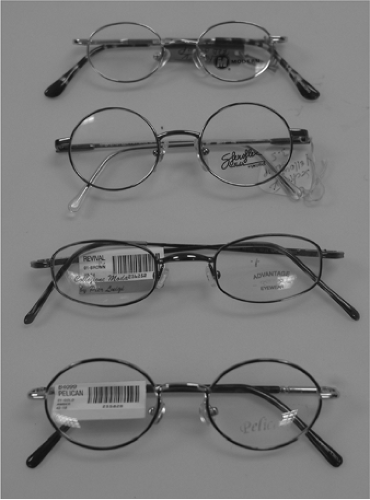 Figure 20.1. A sampling of frames available for very young children. (See color well.) |
Myopia will have a significant effect on the child in the acquisition of visual information at distance. With the blur induced by the focus of the distance objects falling in front of the retina, clear images are not possible uncorrected. The child can tolerate a certain degree of blur, but that is unique to the child and definitely not a specific dioptric power. To restore clarity of vision, concave lenses need to be prescribed. How
much to prescribe depends on age, posture, development, needs, and mobility. A very young child does not need 20/20 acuity and developmentally is not expected to have it. Therefore, the degree of myopia a child under 2 years of age needs to warrant the prescription of lenses is significant. The infant’s total spatial world is at near. These children certainly look out at distance and see things in the distance, but spend most of their time in near space. The myopic child sees clearly in near space at some distance, depending on the degree of myopia. Of course, in considering a highly myopic child, we need to be concerned about blur at distance, but also at near. Infants who are 15.00 D myopic can only see things clearly that are less than 3 inches from their face. Visual acuity must be monitored in such a child for the development of amblyopia. Until the child starts walking and moving around in space, it is not essential for the child to have a perfectly clear focus. Therefore, for the first 12 to 18 months not correcting or undercorrecting as much as 4.00 D of myopia is reasonable. Once the child begins to walk and move around the environment, it becomes more important for the child to have access to single, clear, binocular vision. At that point, 4.00 D of blur is not acceptable. Toddlers and older children need lenses that will more closely bring them into conjugacy with the distance. This does not mean they require full correction, but rather a 4.00 D blur is no longer acceptable. These children need to be examined frequently (every 3–4 months) to monitor acuity, refractive error, and emmetropization. A 6-month-old who is 20.00 D of myopia is very unlikely to emmetropize, but still requires frequent examination to monitor acuities, retinas, and the prescription. The 20.00 D myopic 6-month-old, with compliant parents, would be a good candidate for contact lens wear, an option that should be offered.
much to prescribe depends on age, posture, development, needs, and mobility. A very young child does not need 20/20 acuity and developmentally is not expected to have it. Therefore, the degree of myopia a child under 2 years of age needs to warrant the prescription of lenses is significant. The infant’s total spatial world is at near. These children certainly look out at distance and see things in the distance, but spend most of their time in near space. The myopic child sees clearly in near space at some distance, depending on the degree of myopia. Of course, in considering a highly myopic child, we need to be concerned about blur at distance, but also at near. Infants who are 15.00 D myopic can only see things clearly that are less than 3 inches from their face. Visual acuity must be monitored in such a child for the development of amblyopia. Until the child starts walking and moving around in space, it is not essential for the child to have a perfectly clear focus. Therefore, for the first 12 to 18 months not correcting or undercorrecting as much as 4.00 D of myopia is reasonable. Once the child begins to walk and move around the environment, it becomes more important for the child to have access to single, clear, binocular vision. At that point, 4.00 D of blur is not acceptable. Toddlers and older children need lenses that will more closely bring them into conjugacy with the distance. This does not mean they require full correction, but rather a 4.00 D blur is no longer acceptable. These children need to be examined frequently (every 3–4 months) to monitor acuity, refractive error, and emmetropization. A 6-month-old who is 20.00 D of myopia is very unlikely to emmetropize, but still requires frequent examination to monitor acuities, retinas, and the prescription. The 20.00 D myopic 6-month-old, with compliant parents, would be a good candidate for contact lens wear, an option that should be offered.
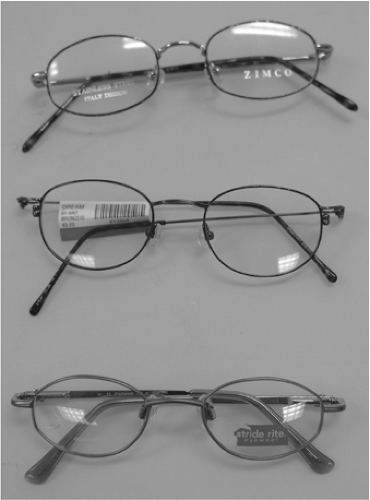 Figure 20.2. A sampling of frames available for very young children. (See color well.) |
 Figure 20.3. A sampling of frames available for very young children. (See color well.) |
Once the child has entered preschool, accurate myopic prescribing is necessary. This is usually in the child aged 3 to 4 years. Up to this point, myopia greater than 3.00 to 4.00 D is required before correction. Now, myopia of 2.00 D or greater requires correction. The clinician can still prescribe an undercorrection, but should
not leave the patient’s vision significantly uncorrected. Once the child enters kindergarten (about 5 years), full correction of myopia should occur because, although most of the child’s activities will be at near, some academic topics are taught off the blackboard. The myopic child whose vision is under- or uncorrected will miss information during these activities even if seated close to the blackboard. From this age on, blackboard work will increase, so distance correction is important. During the early years, myopic blur is tolerated well, but once school work becomes more demanding, blur is a problem and can impede a student’s progress. When prescribing for any patient, consider binocularity. When it comes to the myopic patient, if the patient is esophoric, a mild undercorrection will help binocular posture by decreasing divergence demand. If the child is exophoric, full minus should be given to maintain ocular alignment by increasing convergence demand for the patient. My position is not to increase minus over and above the full minus prescription to facilitate alignment, although this has been done by some authors (5,6,7,8).
not leave the patient’s vision significantly uncorrected. Once the child enters kindergarten (about 5 years), full correction of myopia should occur because, although most of the child’s activities will be at near, some academic topics are taught off the blackboard. The myopic child whose vision is under- or uncorrected will miss information during these activities even if seated close to the blackboard. From this age on, blackboard work will increase, so distance correction is important. During the early years, myopic blur is tolerated well, but once school work becomes more demanding, blur is a problem and can impede a student’s progress. When prescribing for any patient, consider binocularity. When it comes to the myopic patient, if the patient is esophoric, a mild undercorrection will help binocular posture by decreasing divergence demand. If the child is exophoric, full minus should be given to maintain ocular alignment by increasing convergence demand for the patient. My position is not to increase minus over and above the full minus prescription to facilitate alignment, although this has been done by some authors (5,6,7,8).
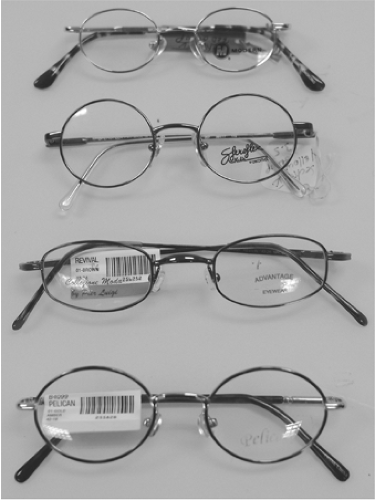 Figure 20.4. A sampling of frames available for very young children. (See color well.) |
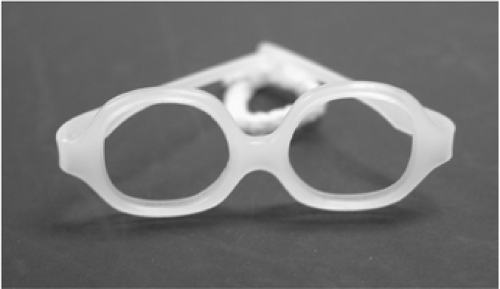 Figure 20.5. Solo Bambini soft plastic frames for young children. All frames come with straps to keep the glasses on. (See color well.) |
With the exception of pathologic myopia, which starts out as very high bilateral (usually) myopia, the young child who manifests low degrees of myopia will usually increase myopic correction throughout the school years. This is a direct effect of extended near work, genetics, or both. Whatever the cause, eye practitioners have been trying for decades to slow down the progression of this school year myopia. Attempts have included such minimal approaches as visual hygiene (e.g., taking breaks from extended near point task, good lighting, high-contrast text) to moderate approaches (e.g., undercorrecting distance prescriptions), to utilization of bifocal adds to decrease the accommodative demand of near work, to a more extreme form of therapy having bifocal lenses with atropine to eliminate accommodative effort.
Parssinen et al. (9) looked at myopia progression over a period of 3 years in schoolchildren 9 to 11 years of age. Three treatment groups consisted of (a) minus lenses, full correction to be used for continuous wear; (b) full correction of minus lenses to be used for distance only; and (c) full minus lenses for distance with a +1.75 D bifocal add OU. They retrieved 3-year refraction values from 237 children. They found no statistical correlation between the sphero-equivalent refraction and its increase in the right eye, but found a negative correlation in the left eye (i.e., the change in the continuous wear group—increased -1.46 D) that was less than the distance vision only group (increased -1.87 D). They noted no differences between the groups in school performance or accidents. It was interesting, however, that no
matter what group was examined, the greater the daily close work done, the faster the rate of myopic progression and the shorter the average reading distance, the faster the myopic progression. Despite these findings, they found no relationship of myopia progression to accommodation. A significant amount of evidence disagrees with this conclusion.
matter what group was examined, the greater the daily close work done, the faster the rate of myopic progression and the shorter the average reading distance, the faster the myopic progression. Despite these findings, they found no relationship of myopia progression to accommodation. A significant amount of evidence disagrees with this conclusion.
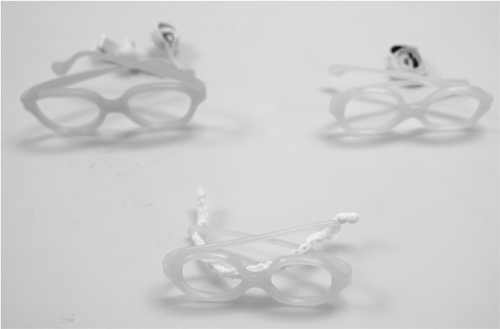 Figure 20.6. Solo Bambini soft plastic frames for young children. All frames come with straps to keep the glasses on. (See color well.) |
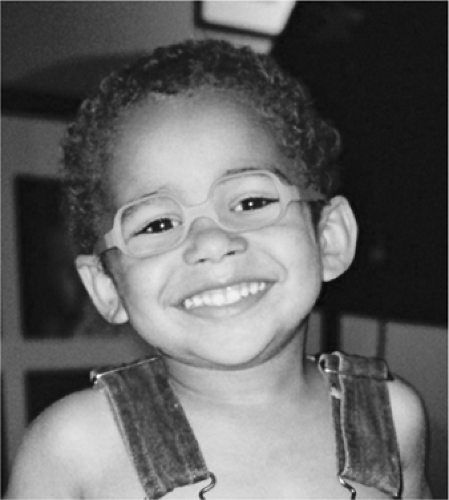 Figure 20.7. Logan wearing Solo Bambini frame with lenses. (See color well.) |
Fulk et al. (10) looked at whether bifocals had any effect on the progression of myopia in children with esophoria. They had two groups of children: single-vision glasses use and a bifocals group with a +1.50 D add. These children were followed for 2.5 years after which time myopia progression was evaluated. Seven children were lost to follow-up but, of those who completed the study, a slightly slower progression was noted for the bifocal group (0.99 D) versus the single vision group (1.24 D).
Goss (11), in a literature review, found that when the near point phoria is eso, greater rates of progression occur, and that some degree of myopia control can be established by shifting the phoria into the normal range by spectacle corrections such as bifocals. Fulk et al. (12),
in a 4.5 year study, looked at the effects of bifocal lenses on the progression of myopia. During the first 24 months, they found a significant difference between the children who wore single vision glasses and those who wore bifocals, with myopia in the latter group progressing more slowly than the single vision lens group. They also found a similar trend in vitreous chamber growth. During the last 2.5 years of the study, however, the difference in the degree of myopia was maintained, but did not increase. Fulk et al. (13), in an earlier paper, found that bifocal lenses slowed the progression of myopia in those children with near point esophoria. They also found, not surprisingly, that myopia progressed more rapidly during the school year than during summer vacation.
in a 4.5 year study, looked at the effects of bifocal lenses on the progression of myopia. During the first 24 months, they found a significant difference between the children who wore single vision glasses and those who wore bifocals, with myopia in the latter group progressing more slowly than the single vision lens group. They also found a similar trend in vitreous chamber growth. During the last 2.5 years of the study, however, the difference in the degree of myopia was maintained, but did not increase. Fulk et al. (13), in an earlier paper, found that bifocal lenses slowed the progression of myopia in those children with near point esophoria. They also found, not surprisingly, that myopia progressed more rapidly during the school year than during summer vacation.
Ong et al. (14) look at the effects of spectacle intervention on the progression of myopia in children over a period of 3 years. They studied four groups of children: (a) full-time wearers; (b) myopic patients who started as distance only and shifted to full-time wear; (c) distance wearers; and (d) nonwearers. The progression of myopia for the four groups, when age-adjusted, was not significantly different. The study failed to show any overall effect of spectacle intervention on the progression of myopia.
Gwiazda et al. (15) in the Correction of Myopia Evaluation Trial (COMET) found that myopic children given bifocals for accommodative lags and or esophoria had an additional benefit of slowed myopia progression. Their results supported the COMET model that myopia progression is caused by retinal defocus. Results of the study suggest that children with large lags of accommodation and near esophoria can experience slowed progression of myopia.
Evidence suggests that some of the aforementioned therapies may slow the progression of myopia. One therapy, however, seems to guarantee it—atropine use with bifocals. Whether the results warrant the use of atropine is questionable. Nonetheless, it is effective in slowing down myopia.
In 1999, Shih et al. (16) examined the effectiveness of different concentrations of atropine on controlling the progression of myopia. It was known that 1% atropine effectively slows myopia progression, but the authors acknowledged its use was associated with adverse side effects including photophobia, blurred vision, and poor compliance. Therefore, they looked at whether lower concentrations of the drug would control myopia progression. They treated their sample (ranging in age from 6 to 13 years) with nightly drops of atropine of various concentrations ranging from 0.5% to 0.1% or a control treatment. After 2 years, they found that all groups showed significantly less myopic progression than the control group and many (61% of the students in the 0.5% group) had no myopic progression. Of the children in the 0.5% atropine group 4% had fast myopic progression as did 17% in the 0.25% group and 33% in the 0.1% group. Of the control group, 40% had fast myopic corrections. The authors concluded that all three concentrations of atropine had significant effects on controlling myopia, with 0.5% atropine being the most effective. Romano and Donovan (17) examined the effects of atropine and photochromic bifocal lenses on the progression of school myopia. They used full myopic correction with a +3.00 D add OU with photochromic gray extra lenses and 1% atropine OU. They found the mean refractive change was +.07 D for the “always compliant group” (i.e., a decrease in myopia). The “sometimes compliant group” increased on average -0.18 D per year and the “never compliant group” increased -0.17 D per year. The mean change in the refractive error of a similar cohort aged 8 to 15 years was -0.24 D per year. Romano and Donovan concluded that use of atropine and bifocals was an appropriate, effective, and safe management for progressive school myopia and also, probably for pathologic myopia. They made no assessment of symptoms during the period of bifocal wear with atropine. Another effort to show the effectiveness of atropine on the progression of myopia was done through a literature review (18). The authors reviewed records from 1968–2000. They reviewed ten clinical trials of different interventions to retard myopia progression, which included three atropine eye drops (0.5%) studies, bifocal studies, and a soft contact lens study. They concluded from their review that sufficient information did not exist to support interventions to prevent the progression of myopia.
Kennedy et al. (19), in a long term, cohort study, looked at the effects of atropine




Stay updated, free articles. Join our Telegram channel

Full access? Get Clinical Tree


